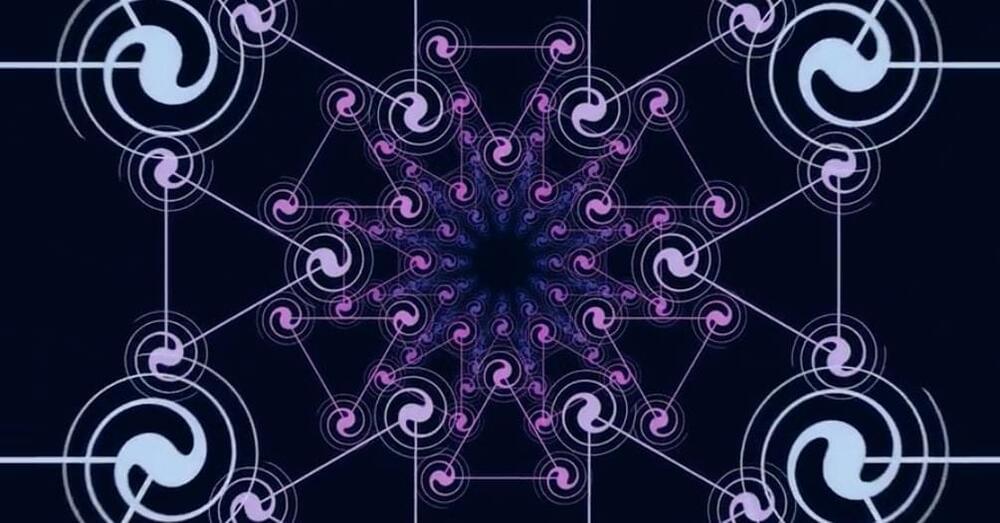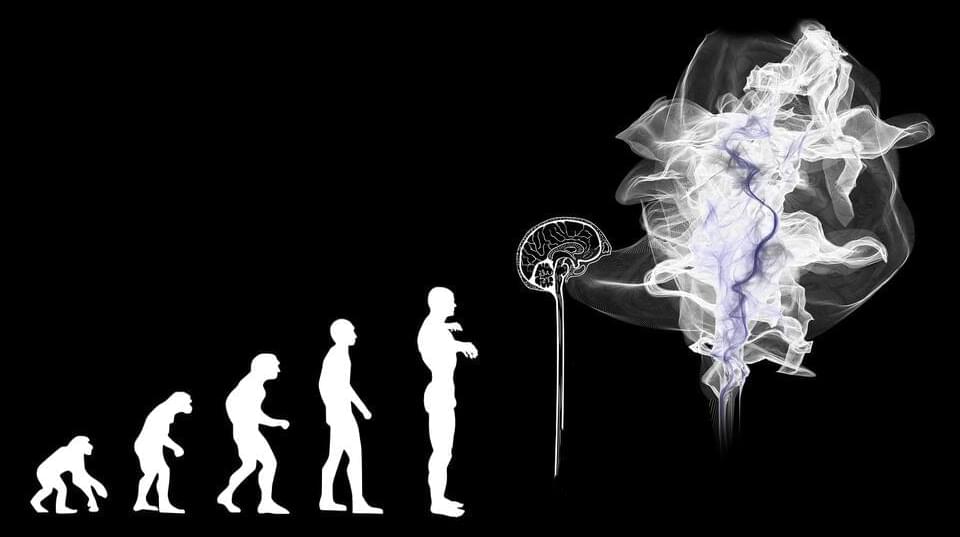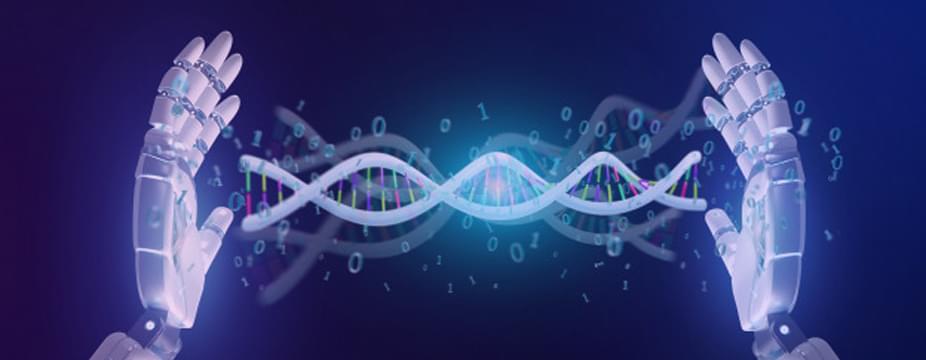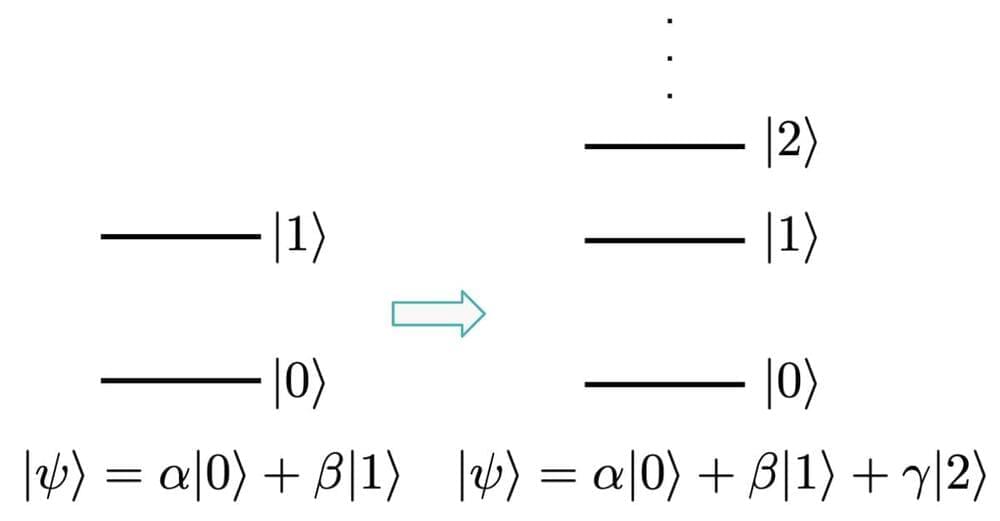Archive for the ‘mathematics’ category: Page 97
Dec 27, 2021
New AI improves itself through Darwinian-style evolution
Posted by Shubham Ghosh Roy in categories: information science, mathematics, robotics/AI
AutoML-Zero is unique because it uses simple mathematical concepts to generate algorithms “from scratch,” as the paper states. Then, it selects the best ones, and mutates them through a process that’s similar to Darwinian evolution.
AutoML-Zero first randomly generates 100 candidate algorithms, each of which then performs a task, like recognizing an image. The performance of these algorithms is compared to hand-designed algorithms.-Zero then selects the top-performing algorithm to be the “parent.”
“This parent is then copied and mutated to produce a child algorithm that is added to the population, while the oldest algorithm in the population is removed,” the paper states.
Dec 24, 2021
Tetris Handheld Powered By Tritium Cell, Eventually
Posted by Dan Kummer in categories: cybercrime/malcode, mathematics, nuclear energy, solar power, sustainability
The idea of a tritium power cell is pretty straightforward: stick enough of the tiny glowing tubes to a photovoltaic panel and your DIY “nuclear battery” will generate energy for the next decade or so. Only problem is that the power produced, measured in a few microwatts, isn’t enough to do much with. But as [Ian Charnas] demonstrates in his latest video, you can eke some real-world use out of such a cell by storing up its power over a long enough period.
As with previous projects we’ve seen, [Ian] builds his cell by sandwiching an array of keychain-sized tritium tubes between two solar panels. Isolated from any outside light, power produced by the panels is the result of the weak green glow given off by the tube’s phosphorus coating as it gets bombarded with electrons. The panels are then used to charge a bank of thin-film solid state batteries, which are notable for their exceptionally low self-discharge rate.
Continue reading “Tetris Handheld Powered By Tritium Cell, Eventually” »
Dec 24, 2021
PARADOX LOST: The Public Edition
Posted by Dan Kummer in categories: cosmology, government, mathematics, particle physics, time travel
 “PARADOX LOST: The Public Edition, by Marshall Barnes,” Oct 6, 2014.
“PARADOX LOST: The Public Edition, by Marshall Barnes,” Oct 6, 2014.
This book is by internationally noted research and development engineer, Marshall Barnes, and is based on his special report for select members of the United States Congress on the coming reality of time travel, which is now here on the particle level. The only authoritative book on the subject of time travel, it scientifically answers all the issues around the topic, proves why paradoxes are impossible and why the world’s physicists have been so wrong about time travel for so long. Includes definitive analysis of errors by Stephen Hawking, Kip Thorne, Paul Davies, Tim Maudlin, among others. Answers Kurt Godel’s famous question of how can a past that hasn’t passed yet, be the past, and many other issues left unanswered by all other sources.
Among outstanding features, it details Marshall’s creation of the Verdrehung Fan™, the first time machine in the world, that is sending signals through traversable micro wormholes, as speculated could be possible in New Scientist magazine, May 20th, 2014. The Einstein related physics from which it works and how Marshall used it to defeat world famous Ronald Mallett in the race to build a time machine, is revealed as well as why Mallett is far less than the media has made him seem.
Easy to read but rich in detail, this book will be a challenge for scientist and non-scientist alike, with preconceived notions about the subject, as all cliches are dismantled and discarded, revealing stunning, hidden truths that are reached without ever taking a step off the path of known physics. This is the book for those wanting definitive answers backed by definitive proofs and calculations, without dealing with the heavy mathematics.
Dec 24, 2021
Examining recent developments in quantum chromodynamics
Posted by Genevieve Klien in categories: engineering, mathematics, particle physics, quantum physics
Created as an analogy for Quantum Electrodynamics (QED) — which describes the interactions due to the electromagnetic force carried by photons — Quantum Chromodynamics (QCD) is the theory of physics that explains the interactions mediated by the strong force — one of the four fundamental forces of nature.
A new collection of papers published in The European Physical Journal Special Topics and edited by Diogo Boito, Instituto de Fisica de Sao Carlos, Universidade de Sao Paulo, Brazil, and Irinel Caprini, Horia Hulubei National Institute for Physics and Nuclear Engineering, Bucharest, Romania, brings together recent developments in the investigation of QCD.
The editors explain in a special introduction to the collection that due to a much stronger coupling in the strong force — carried by gluons between quarks, forming the fundamental building blocks of matter — described by QCD, than the electromagnetic force, the divergence of perturbation expansions in the mathematical descriptions of a system can have important physical consequences. The editors point out that this has become increasingly relevant with recent high-precision calculations in QCD, due to advances in the so-called higher-order loop computations.
Dec 23, 2021
Criticizing Starship (Part Three)
Posted by Chris J. Kent in categories: cybercrime/malcode, finance, government, internet, mathematics, space travel

He has done his math. The questions seem to be: How to put together viable payloads to make use of Stsrship launches? How to build new markets in space?
This again?! Game Over? Busted? We’re doing Starship again so soon because I’m an unoriginal hack. There’s also been new developments in Starship and I think it’s a perfect time to revisit the launch system. Get as mad as you wish.
Dec 20, 2021
Lightelligence PACE Announcement Video
Posted by Kelvin Dafiaghor in categories: mathematics, robotics/AI

Lightelligence, the global optical computing innovator, revealed its Photonic Arithmetic Computing Engine (PACE), the company’s latest platform to fully integrate photonics and electronics in a small form factor.
As Lightelligence’s first demonstration of optical computing for use cases beyond AI and deep learning, PACE efficiently searches for solutions to several of the hardest computational math problems, including the Ising problem, and the graph Max-Cut and Min-Cut problems, illustrating the real-world potential of integrated photonics in advanced computation.
Dec 19, 2021
AI’s Impact On Biotechnology
Posted by Gemechu Taye in categories: biotech/medical, food, mathematics, robotics/AI
Biotechnology is a curious marriage of two seemingly disparate worlds. On one end, we have living organisms—wild, unpredictable celestial creations that can probably never be understood or appreciated enough, while on the other is technology—a cold, artificial entity that exists to bring convenience, structure and mathematical certainty in human lives. The contrast works well in combination, though, with biotechnology being an indispensable part of both healthcare and medicine. In addition to those two, there are several other applications in which biotechnology plays a central role—deep-sea exploration, protein synthesis, food quality regulation and preventing environmental degradation. The increasing involvement of AI in biotechnology is one of the main reasons for its growing scope of applications.
So, how exactly does AI impact biotechnology? For starters, AI fits in neatly with the dichotomous nature of biotechnology. After all, the technology contains a duality of its own—machine-like efficiency combined with the quaintly animalistic unpredictability in the way it works. In general terms, businesses and experts involved in biotechnology use AI to improve the quality of research and for improving compliance with regulatory standards.
More specifically, AI improves data capturing, analysis and pattern recognition in the following biotechnology-based applications:
Dec 19, 2021
Beyond Qubits: Unlocking the Third State in Quantum Processors
Posted by Quinn Sena in categories: energy, mathematics, quantum physics
By Alex Hill, Senior Quantum Systems Engineer
Qubits are the basic building block of a quantum processor, and are so named because they represent a continuum of complex superpositions of two basic quantum states. The power of qubits comes in part from their ability to encode significantly more information than a classical bit — an infinite set of states between 0 and 1. In mathematical terms, quantum gates that manipulate the state of individual qubits are unitary operators drawn from SU.
Rigetti’s superconducting quantum processors are based on the transmon design [1]. Each physical qubit is an anharmonic oscillator, meaning that the energy gaps between subsequent qubit energy states decrease as the qubit climbs higher up the state ladder. We typically only address the first two states, 0 and 1 (in the literature, sometimes referred to as g(round) and e(xcited)); however, the design of our qubits supports even higher states. The simple structure of the transmon energy levels gives superconducting qubits the unique ability to address many of these states in a single circuit.
Dec 19, 2021
Cosmologists Close in on Logical Laws for the Big Bang
Posted by Genevieve Klien in categories: cosmology, mathematics, physics

Physicists are translating commonsense principles into strict mathematical constraints for how our universe must have behaved at the beginning of time.













